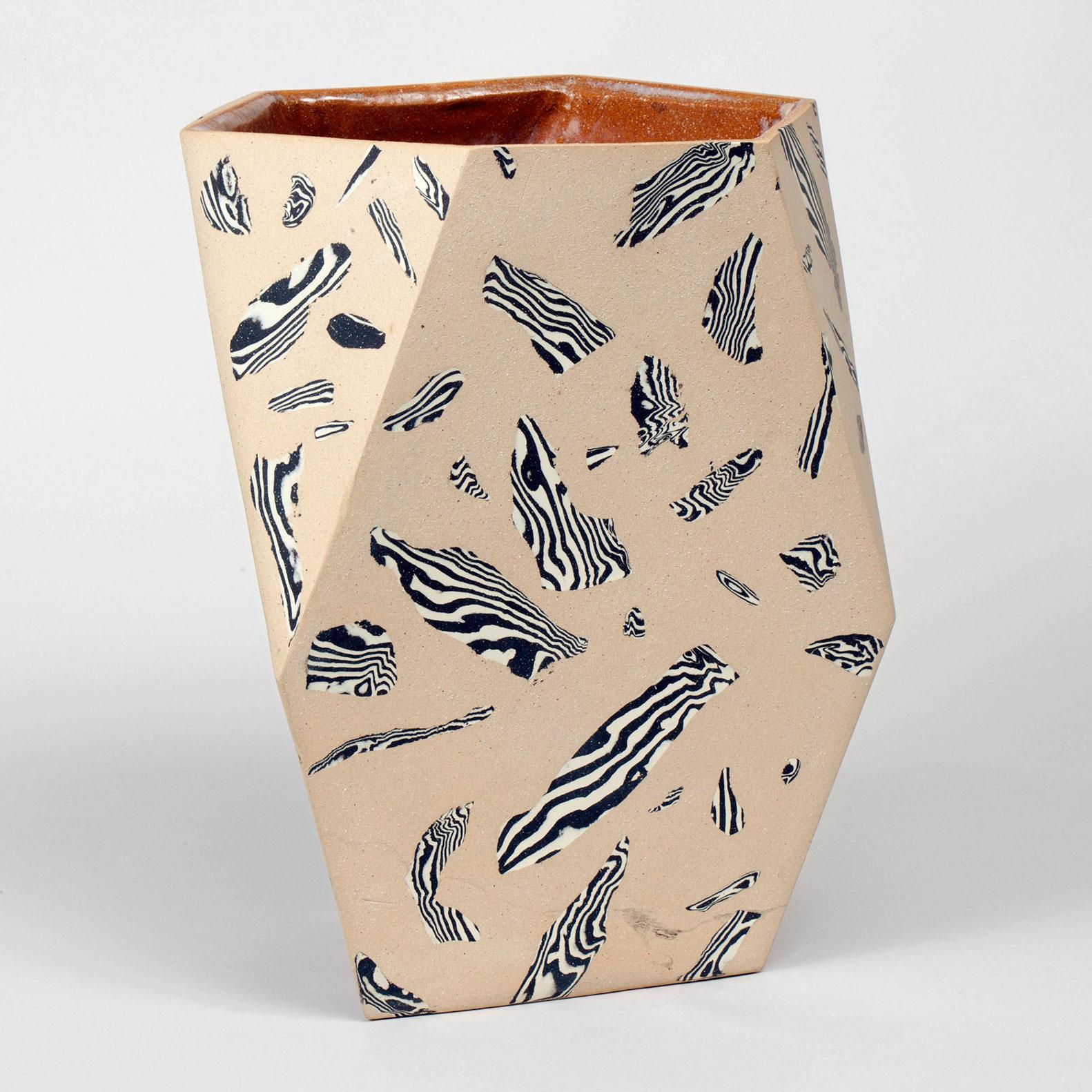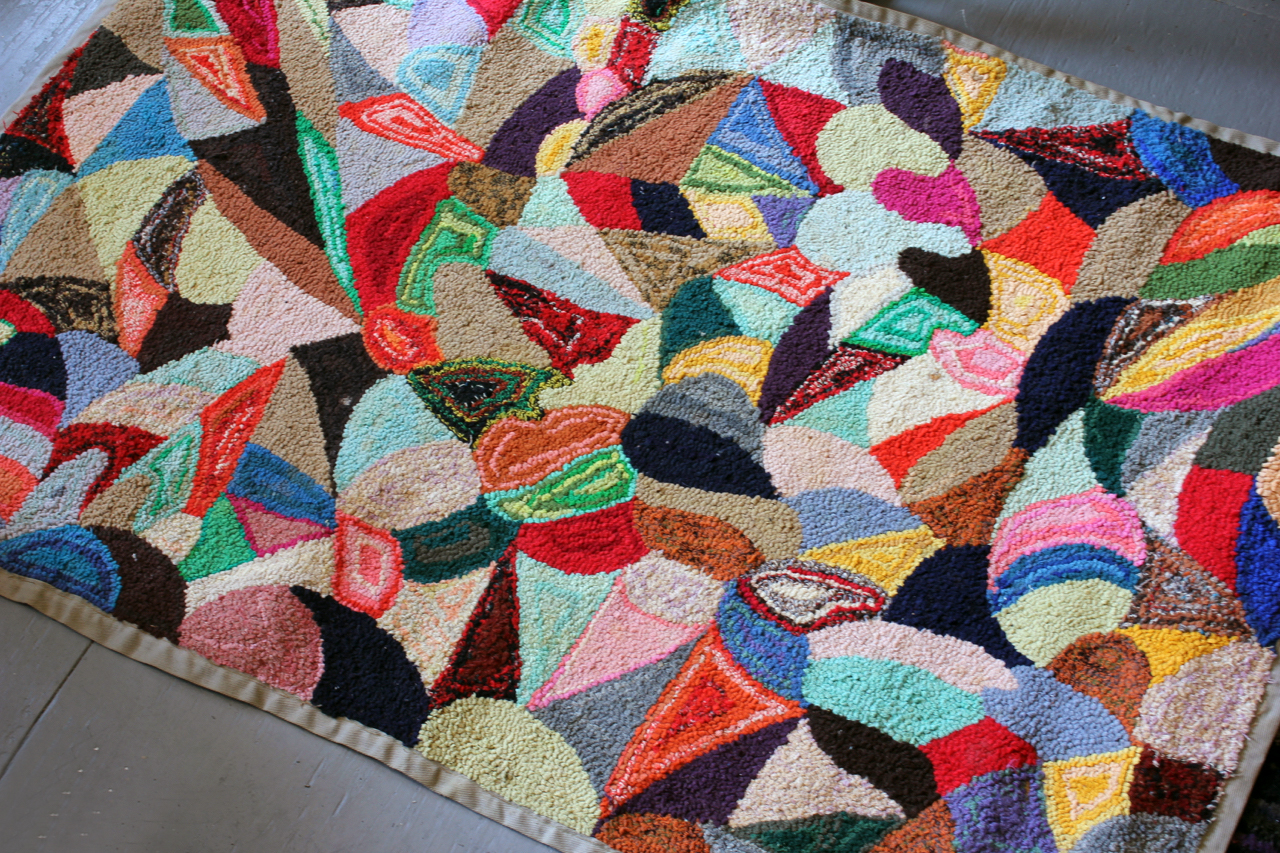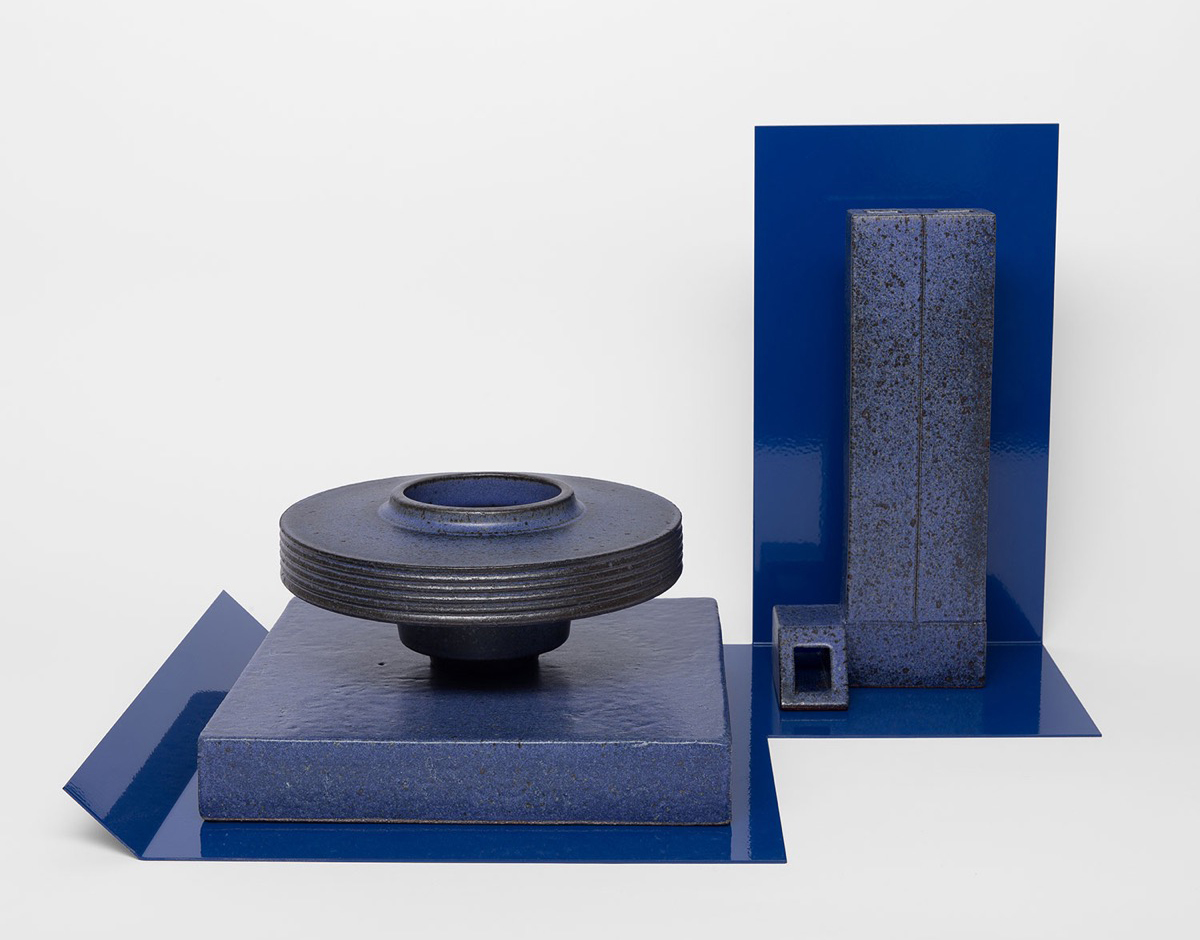
07.13.16
Excerpt: Exhibition
A Landscape of Architectural Ceramics at Patrick Parrish Gallery
It’s been nearly four years since Sight Unseen first introduced the Oregon-based artist and ceramicist Ian McDonald, back when his work primarily consisted of “sculptural one-offs and elaborate mixed-media wall installations.” Along the way his pieces got more architectural, more functional, and more singular; his first solo show at Patrick Parrish Gallery in New York opened yesterday, and it’s full of ceramic vessels made in parts and arranged within the parameters of powder-coated trays. “With this show, I’ve identified something that I want to dig deep into, and I’m realizing that I’ll probably stick with this form — meaning, working at the wheel in parts — for a while,” he says. We spoke with McDonald about refining the old, experimenting with the new, and the satisfaction he’s found in exploring a form that resonates.
What inspired the name of this show: Index, Thumb, Thumb, Index?
If you hold your hands out, with your thumbs together and your index fingers up, you’re creating a sort of frame, like you’re taking a picture. A lot of work that I’ve done in the past has been about arranging objects within a finite space, and in this case, pieces are organized on powder-coated trays so that in a way, the tray is acting as a frame. It’s a way to contextualize the objects. The ceramics themselves look quite industrial, but they’re all completely handmade at the potter’s wheel in a very traditional way. So the idea of Index, Thumb, Thumb, Index has a lot to do with the hand.
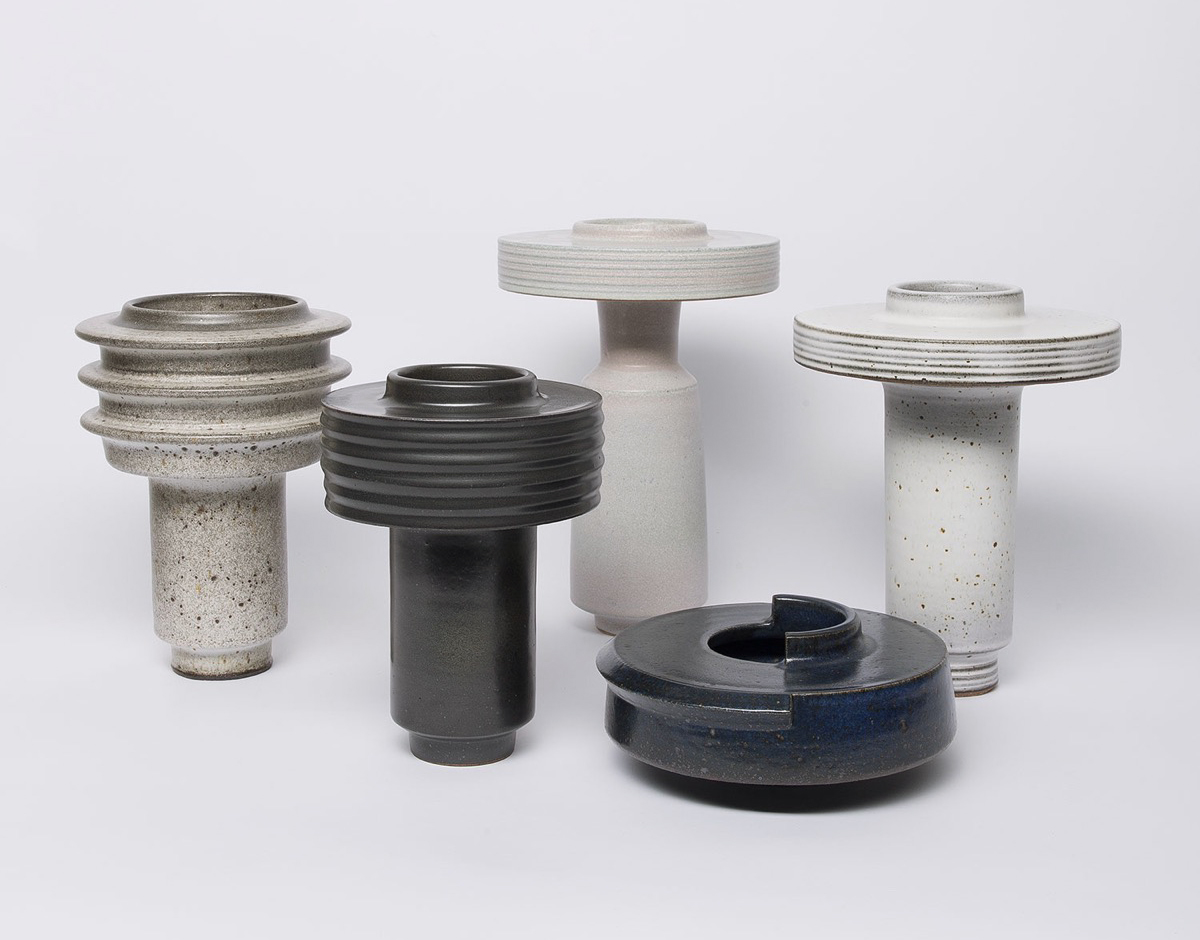 What does your process of arranging objects entail?
What does your process of arranging objects entail?
It really goes in many different directions depending on what I’m working on. Sometimes the objects are made first and the trays are made afterward, laser-cut to fit the pieces exactly. Other times, those trays are left open-ended and I’ll have a little space to riff around. I’m always working with a vocabulary of objects and then improvising within a frame. Everything is made in parts, so even with the vessels, there are probably five or six thrown pieces that are made separately and then added together. Every form, in the end, is different because this is not an industrial process. If I was doing it that way, there would be a lot more similarity, and I’m much more interested in variety.
Can you expand on that?
I just like the idea that there’s nothing that’s exactly the same. I don’t come from an industrial design background. I come from a pottery and a sculpture background. I’m arriving at an object much more than I am creating a product. I’m less interested in that. Seeing these pieces in person, you’ll notice that the glazes are fired in a very particular, traditional way — this is reduction fired stoneware in gas kilns — so it’s all a little less controlled. The pieces have a more handmade feeling even though they’re quite sharp. Otherwise, they’d look too much like objects produced by something other than me when in reality, I make all this stuff by myself. Everything I do, I do alone.
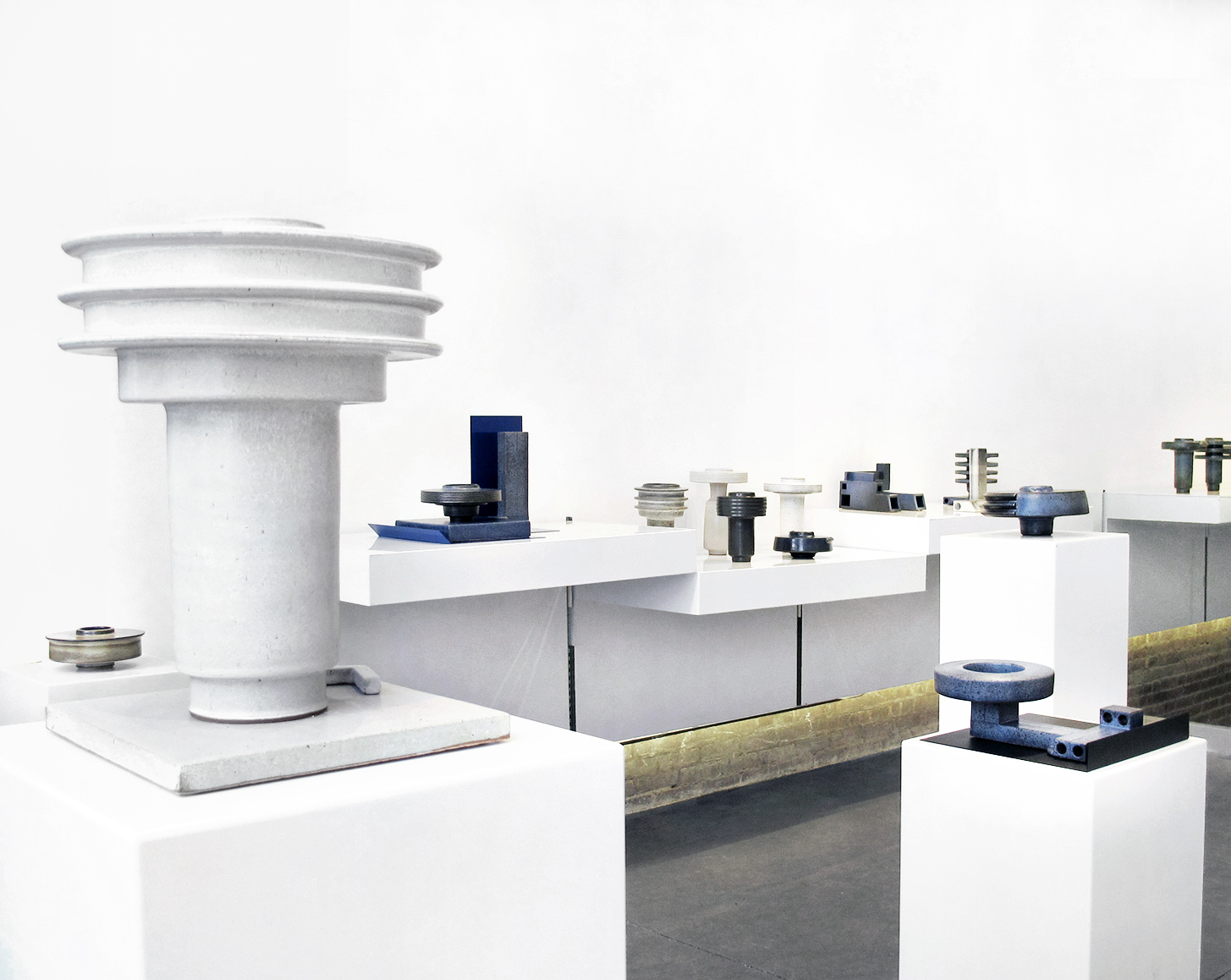 When you refer to working within a frame, do you always mean it literally or is there a looser definition of the word at play?
When you refer to working within a frame, do you always mean it literally or is there a looser definition of the word at play?
I don’t really see it as being literal. The frame can be a conceptual thing — I know I’m going to be making vessels, and that idea of the vessel acts as a sort of frame. That’s the parameter I’m working with. I put together a show in 2013 called Parts and Pottery, and ever since I came up with that silly title, it’s stuck with me. That’s really what I’m doing: taking parts and making pottery out of them. I’m thinking about it architecturally, making a building or thinking of a structure in parts.
What inspired your choice of color with these particular pieces?
I always seem to stick within a color range per show. Purple is about as far out as I get. With these pieces, because I’m working with reduction fired stoneware, there’s a particular color palette that evolves out of that process specifically.
What causes that palette to emerge?
The pieces are fired to a very high temperature. If you were to go to a paint-your-own-ceramics shop, you would see some very bright, very flat color. Those pieces are fired at a low temperature, oftentimes on a very white clay whereas I use some really gnarly, stony clay. Here — and this gets really nerdy, excuse me — the fusion of the surface of the glaze to the actual object is really important. It’s quite active when you look at it up close. It’s not flat. You see a lot of pastel purples, you see blues and hardcore blacks, some grays.
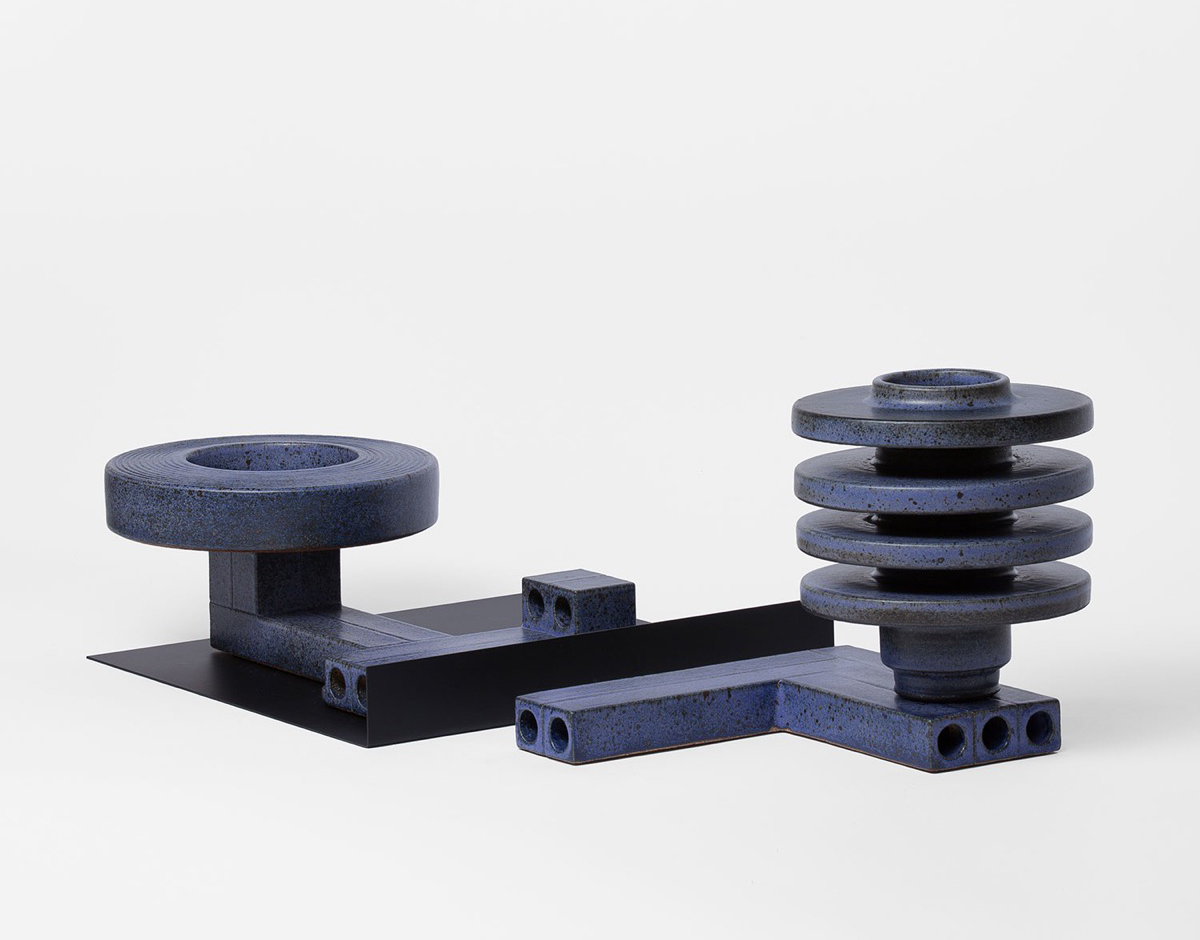 Would you say that the pieces you create are strictly non-functional?
Would you say that the pieces you create are strictly non-functional?
I started working as an apprentice to potters when I was 17 or 18, and I’m 40 now — when you work with something for a long time, you start to discover new possibilities along the way. My shade vessels — which are based on lamps — are completely functional. I don’t put flowers in them because I think of them more as small sculpture, but there’s no doubt that they could function as something else. There’s something about that particular ethic that I like, that I’m still operating within the realm of functionality as part of the concept and the general frame that I’m working in.
It’s funny. In the past, I spent time making and teaching sculpture, so I feel I’m going back to that now, in a way. This has been a real studio process. I’ve spent a lot of time producing objects, rejecting a lot of them, and making many, many parts. Five or six years ago, if you had called me a studio ceramicist I might not have wanted that title. But now, I feel it’s appropriate.
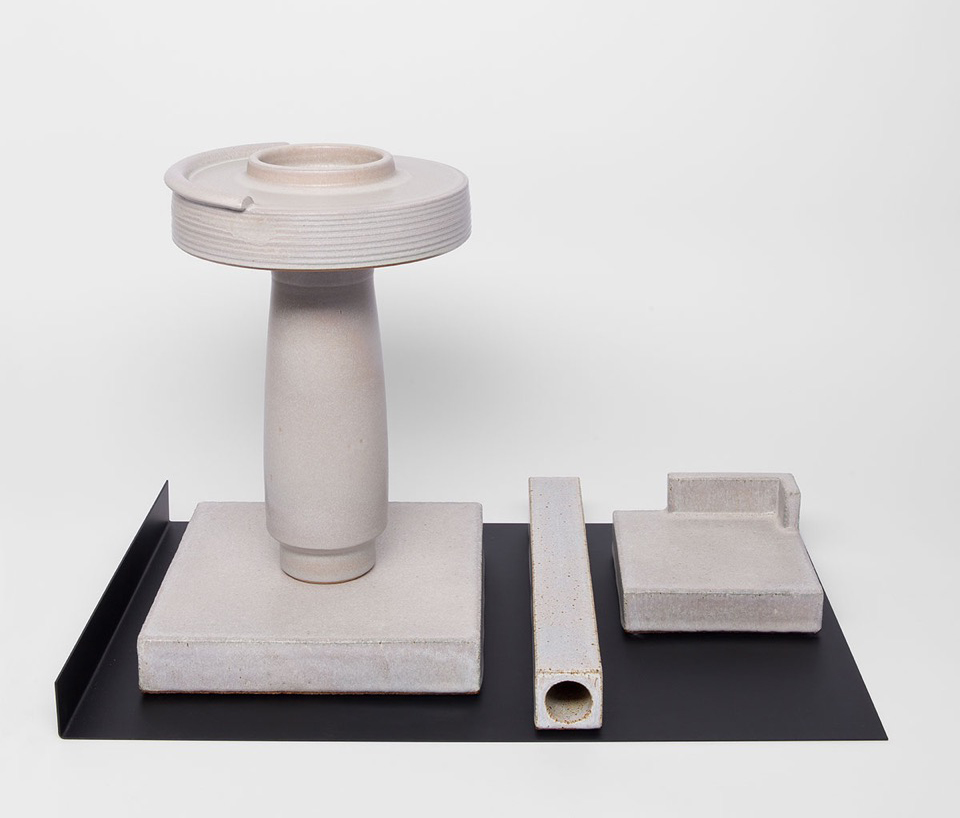 How long did the process of creating these pieces take?
How long did the process of creating these pieces take?
It probably took me a year. I didn’t spend that time working on this exclusively — sometimes small shows come up or I send off single pieces — but I’ve been working on this show for about a year now total.
How would you say your work here differs from what you’ve produced in the past?
It’s a refinement of things I’ve been doing in the past. When I put together different shows, I find I’m getting a little closer to what my vision of them is each time. I’m not bouncing around as much as I used to, where each show is a completely different thing. I’m homing in on something, so maybe that’s what the difference is.
